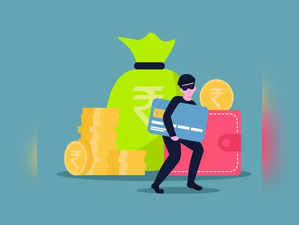
What are mule accounts?
Mule accounts are bank accounts that are used to launder proceeds of crime by fraudsters. In an age when there are strict laws on holding or using large amounts of cash, transactions in the banking system cannot be avoided. At the same time, criminals cannot use bank accounts because KYC norms will enable authorities to link the money to the activity through which they receive it. To avoid such detection, criminals use third-party accounts where they can deposit the proceeds of crime and take them out without detection. The third-party account might be used with or without the consent of the account holder who becomes a 'money mule' for the fraudster.
How do fraudsters get access to mule accounts?
There are multiple ways criminals gain access to mule accounts. One is to approach people with low financial literacy (old, illiterate, or underprivileged) and offer them a lot of money to use either their credentials for opening an account or using an existing account. The other is to find weak links in the account opening chain (digital or when accounts are opened in campaign mode by banks) and open accounts using impersonation.
What are these accounts used for?
Most of these accounts are used for money laundering and phishing scams. Fraudsters trick people into doing a transaction by deception, making the account look genuine, often recruiting individuals to provide their bank account details. Once in the banking system, these accounts will have transactions similar to an ordinary bank account, making it difficult for banks to identify them.
How do they hide the trail?
While this will be a money trail for authorities, fraudsters transfer funds multiple times across states to make it difficult for authorities to follow the trail. Sometimes the money in the account is used for online purchases.
What can be done to address the issue?
Given the government's objective of universal bank accounts, fraudsters will always find weak links. The only way to address this is to use technology to flag unexpected deposits. Second, there has to be coordination between banks to freeze funds in suspicious accounts immediately. Finally, the victim's ability to lodge a complaint with the central portal or 1930 helpline is crucial.
How big is the problem?
There are 800 reported digital frauds every day. The average amount is over ?70,000 per day. The number may be higher if those not reported are taken into account. The dark side of the digital revolution is that it has become very cheap for fraudsters to make attempts. There are call centres that make hundreds of fake calls, warning people of late electricity bills, expiring reward points, matured policies, or parcel delivery. The common thread in all these is that the customer is asked to click on a link and download malware or asked to make an online transaction.
How can retail depositors protect themselves from becoming mules?
Besides ensuring that there are no unknown transactions, Individuals should be cautious of offers that seem too good to be true or involve money or package transfers from clients. A general rule of thumb is not to share your personal bank details such as your Aadhaar card copy and PAN card copy when interacting with unknown entities.
What are the signs of a mule account for banks?
Sudden change in transaction patterns involving large sums, transactions to different countries or sudden conversion of funds into different currencies. Accounts that have been dormant for longer periods are susceptible to being activated as mule accounts.
(Catch all the Business News, Breaking News, Budget 2024 Events and Latest News Updates on The Economic Times.)
Subscribe to The Economic Times Prime and read the ET ePaper online.
(Catch all the Business News, Breaking News, Budget 2024 Events and Latest News Updates on The Economic Times.)
Subscribe to The Economic Times Prime and read the ET ePaper online.









 Get Unlimited Access to The Economic Times
Get Unlimited Access to The Economic Times
